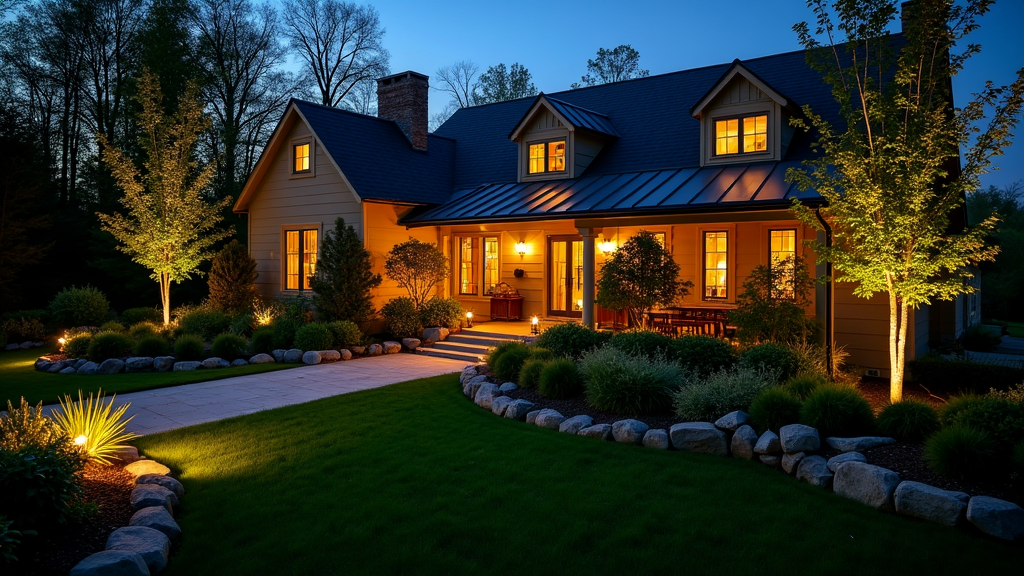Introduction
In today's world, where environmental awareness is at an all-time high, many homeowners are rethinking their outdoor spaces. A traditional lawn, often seen as a quintessential element of landscape design, can be resource-intensive and ecologically taxing. This brings us to the question: What are some sustainable lawn alternatives that align with eco-conscious yard designs? Fortunately, there are numerous options available that not only reduce water use and chemical input but also promote biodiversity and create stunning landscapes.
In this comprehensive guide, we will explore various sustainable lawn alternatives that can transform your yard into a beautiful yet environmentally friendly space. From native plants to ground covers and xeriscaping techniques, we’ll cover them all in detail. By the end of this article, you’ll be well-equipped to make informed decisions about your outdoor design choices.
Choosing Sustainable Lawn Alternatives for Eco-Conscious Yard Designs
When it comes to designing landscapes, one of the first elements many think of is grass. However, opting for sustainable lawn alternatives opens up a myriad of possibilities. The key lies in understanding local ecosystems and selecting plants that thrive in your specific environment.

Why Choose Sustainable Lawn Alternatives?
Environmental Conservation: Traditional lawns often require excessive amounts of water and fertilizers, contributing to pollution and resource depletion. Biodiversity: Native plants attract pollinators like bees and butterflies, fostering a rich ecosystem. Cost-Effective: Many sustainable options require less maintenance over time, saving you money on water bills and landscaping services. Aesthetic Appeal: Diverse plant choices can enhance the beauty of your yard significantly.Types of Sustainable Lawn Alternatives
Let’s delve into some popular alternatives that align perfectly with eco-conscious yard designs.
Native Grasses
What Are Native Grasses?
Native grasses are varieties indigenous to your area which adapt easily to local climates without requiring excessive watering or maintenance.
Benefits of Native Grasses
- Low Maintenance: Once established, they need minimal care. Drought Tolerance: Designed to survive local weather conditions. Wildlife Friendly: Attracts various species beneficial for the ecosystem.
Ground Covers
Understanding Ground Covers
Ground covers are low-growing plants that spread across the soil surface, effectively minimizing erosion while providing visual interest.
Popular Ground Cover Options
- Creeping Thyme: Hardy and aromatic; perfect for sunny spots. Ajuga (Bugleweed): Thrives in shade; offers beautiful purple blooms.
Advantages of Using Ground Covers
Weed Suppression: They outcompete weeds effectively. Soil Erosion Control: Their root systems anchor the soil firmly. Aesthetic Variety: Available in different textures and colors.Xeriscaping Techniques
What Is Xeriscaping?
Xeriscaping involves designing landscapes that require little irrigation by utilizing drought-resistant plants.
Key Principles of Xeriscaping
Planning & Design: Create zones based on plant requirements. Soil Improvement: Enhance soil quality for better water retention. Appropriate Plant Selection: Choose species suited for dry conditions.Benefits of Xeriscaping
- Reduces water usage drastically. Increases property value through attractive designs.
Creating a Wildlife Habitat
Why Create a Wildlife Habitat?
By incorporating native plants into your landscape design, you foster an environment conducive to local wildlife such as birds and insects.
Essential Elements for Wildlife Habitats
Food Sources: Incorporate flowering plants that provide nectar or seeds. Water Features: Add bird baths or small ponds to offer hydration options for animals. Shelter Options: Use shrubs or natural structures like logs for animal refuge.Designing Landscapes with Edible Plants
Incorporating Edibles into Your Landscape Design
Why not grow food while enhancing your home’s appearance? Edible landscaping combines aesthetics with functionality!
Best Edible Plant Choices
- Fruit Trees (e.g., Apple or Pear) Berry Bushes (e.g., Blueberry or Raspberry)
Benefits of Edible Landscaping
Fresh Produce at Home Attractive Visuals with Seasonal ChangesSustainable Hardscaping Ideas
What Is Hardscaping?
Hardscaping refers to non-plant elements in landscaping designs such as patios, walkways, and walls made from materials like stone or brick.
Eco-Friendly Hardscape Materials
Recycled Concrete Natural StoneBenefits of Sustainable Hardscaping
- Low Environmental Impact Longer Lifespan Compared to Traditional Materials
FAQs about Choosing Sustainable Lawn Alternatives
1. What is the easiest sustainable lawn alternative to maintain?
The easiest option would likely be native grasses as they are adapted to local conditions and need minimal upkeep after establishment.
2. How do I choose the right ground cover for my yard?
Consider factors such as sunlight exposure, moisture levels, and soil type when selecting ground covers.
3. Can I mix different types of sustainable plants?
Absolutely! Mixing various species can create a vibrant landscape while promoting biodiversity.
4. How do I start my sustainable landscaping project?
Begin by assessing your current landscape structure and researching native plant options suitable for your region.
5. Will sustainable alternatives save me money?
Yes! While initial costs may vary depending on what you choose, long-term savings arise from reduced water bills and lower maintenance needs.
6. Can I still have a lawn if I want sustainability?
You can opt for low-mow or no-mow grass varieties which require less water and care than traditional lawns while still providing green coverage.
Conclusion
In conclusion, transitioning from traditional lawns to more sustainable lawn alternatives is not just an environmentally responsible choice; it’s also a creative opportunity for designing landscapes that reflect personal values while enhancing outdoor aesthetics. With options ranging from native grasses to edible gardens https://www.ramirezlandl.com/about and xeriscaped areas, it’s easier than ever to cultivate a garden that harmonizes with nature rather than working against it.
Embracing these eco-conscious yard designs can lead to healthier ecosystems in our backyards while bringing joy to everyone who interacts with these vibrant spaces—whether through gardening activities or simply enjoying nature's beauty right outside their windows!
Ultimately, choosing sustainable lawn alternatives allows homeowners not only to contribute positively towards environmental conservation but also showcases their commitment toward creating livable spaces filled with life—an investment worth every effort!